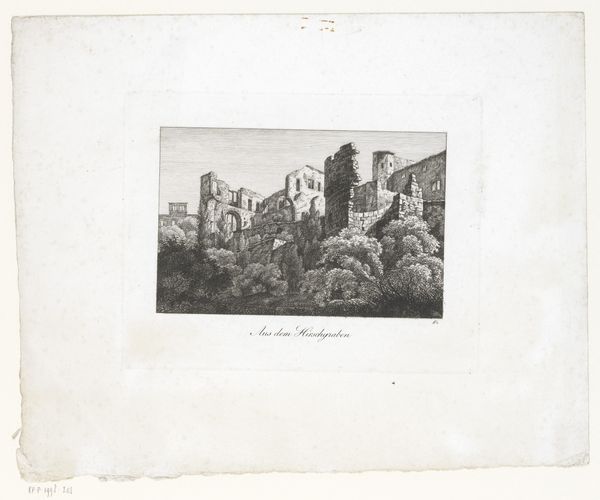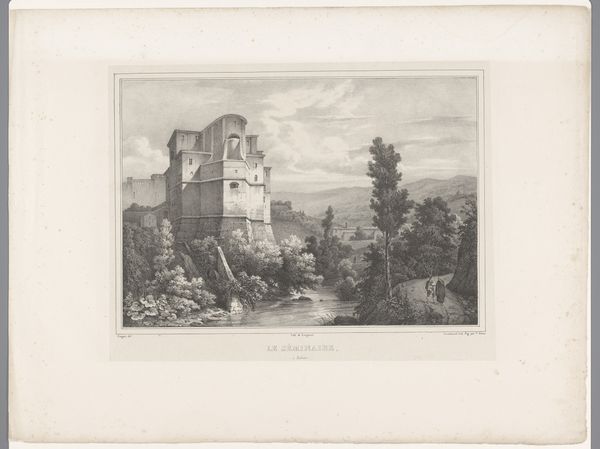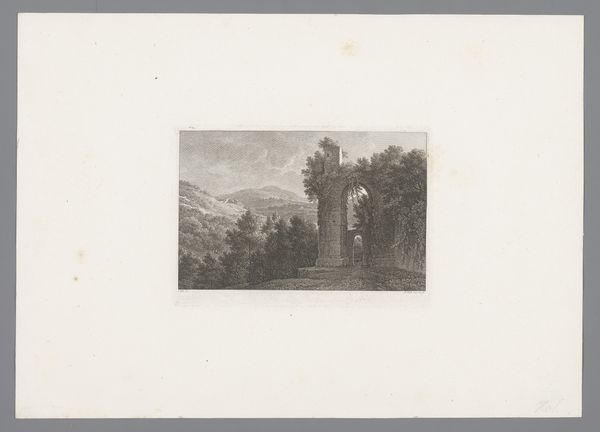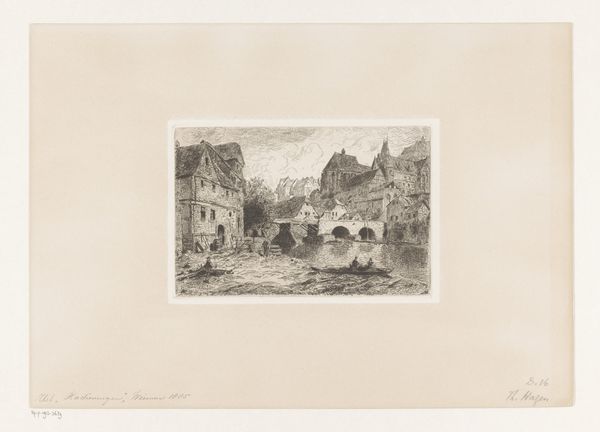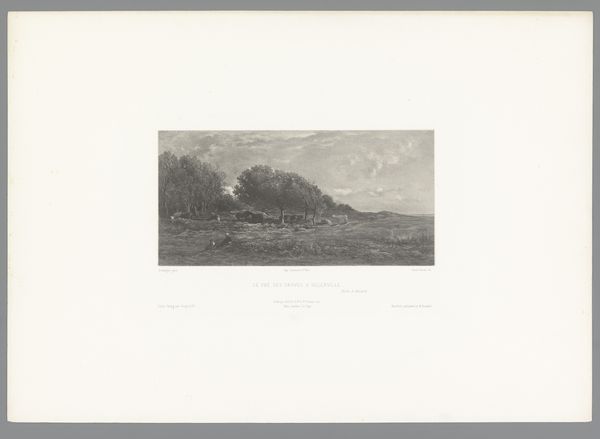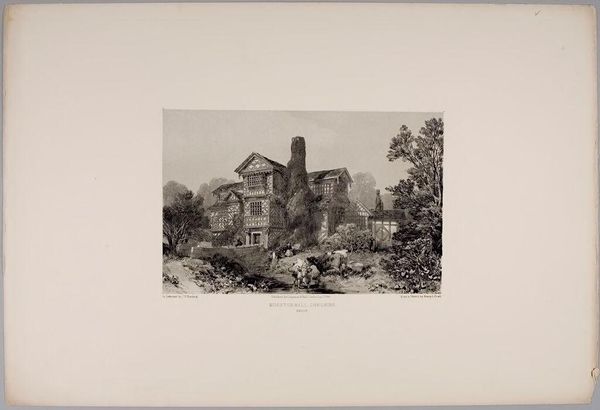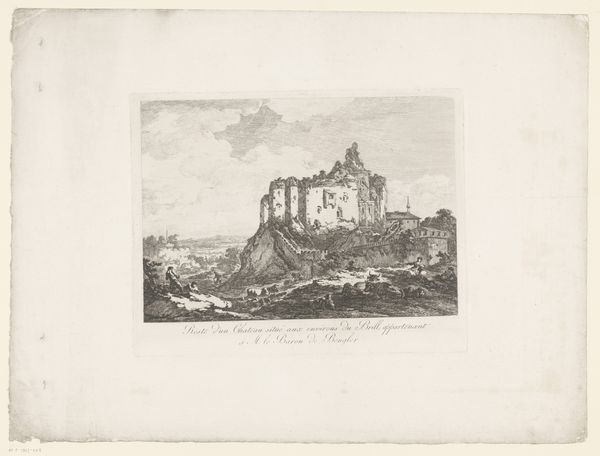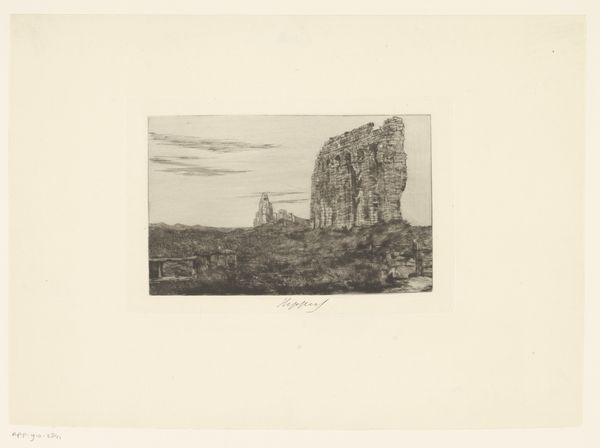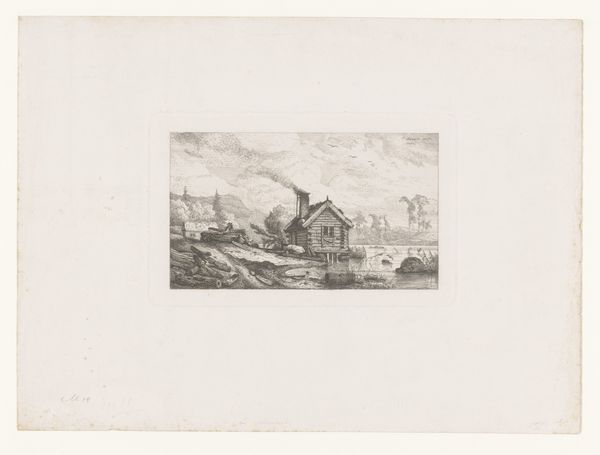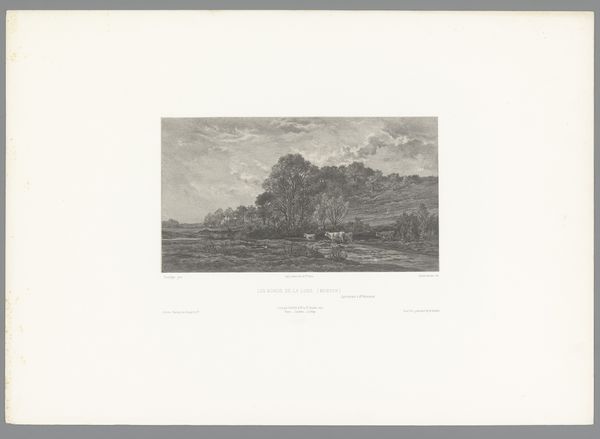
Dimensions: height 121 mm, width 200 mm
Copyright: Rijks Museum: Open Domain
Franz Hoffmann-Fallersleben made this etching of the Walkenried ruins, using a metal plate, acid, and ink to create a scene of decay and reflection. The etching process itself is crucial to the image’s meaning. The fine lines, achieved by carefully exposing the metal to acid, evoke a sense of delicate fragility, mirroring the state of the crumbling architecture. See how the ink clings to the etched lines, creating a play of light and shadow that emphasizes the ruin’s texture and depth. The image is not just a record of a place, but a meditation on time, labor, and the marks left by history. Hoffmann-Fallersleben engaged with both the tradition of landscape art and the emerging industrial processes of printmaking. This tension, between the hand-crafted and the mechanically reproduced, is central to understanding the social context of the work. Printmaking allowed for wider distribution of images, bringing art to a broader audience, but it also raised questions about originality and the value of artistic labor. By focusing on the material processes behind this etching, we can appreciate how art, craft, and industry intersect to shape our understanding of the past.
Comments
No comments
Be the first to comment and join the conversation on the ultimate creative platform.

